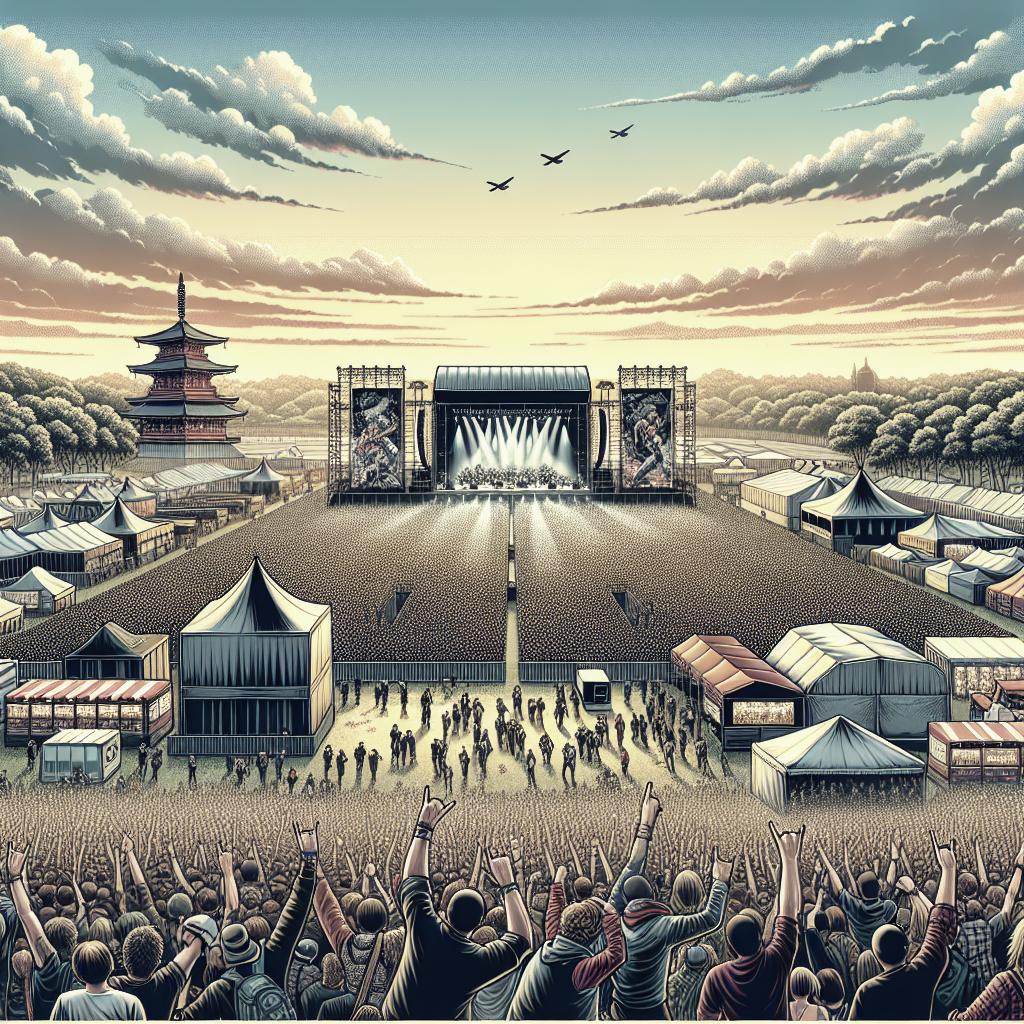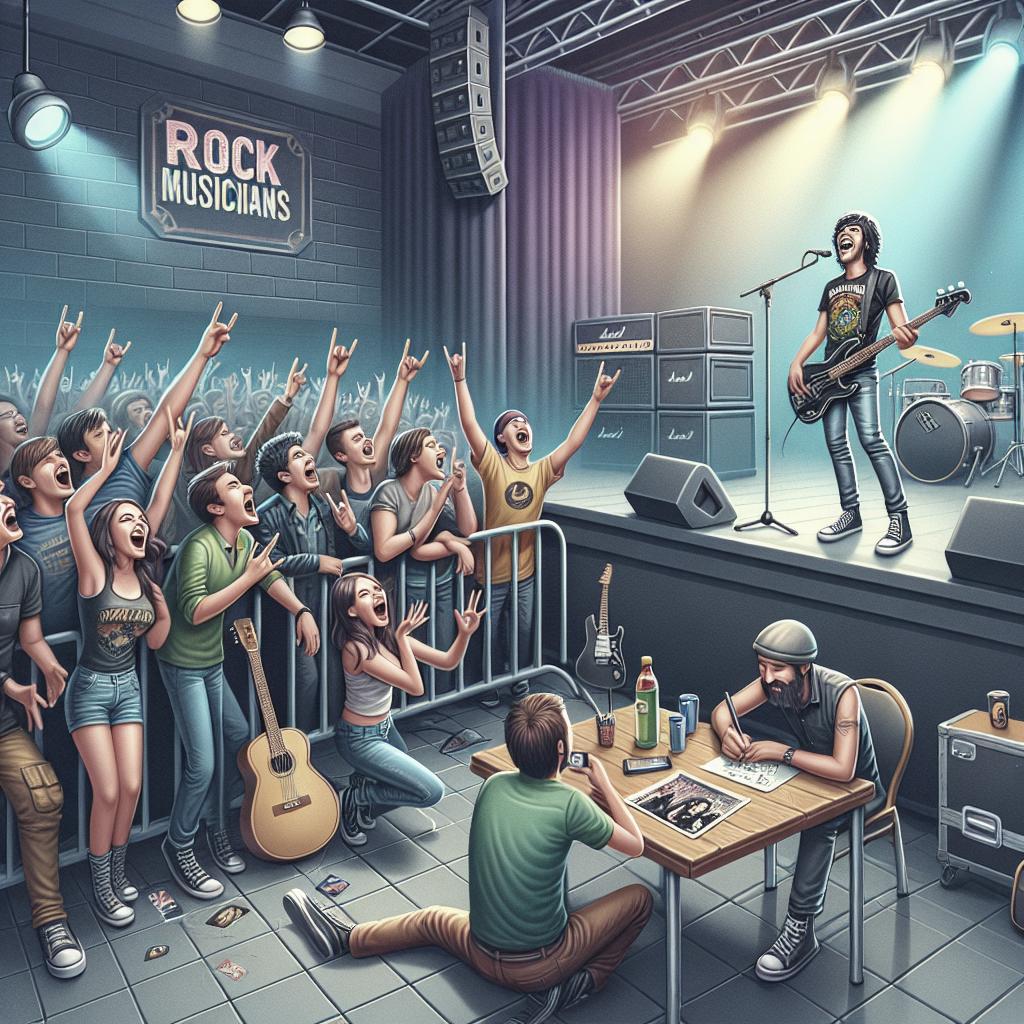Rock festivals have become a staple in music culture worldwide, offering unforgettable experiences and showcasing legendary performances. These events are more than just a series of concerts; they embody the spirit of community, freedom, and musical exploration. In this blog post, we’ll journey through the fascinating origins of rock festivals and highlight some groundbreaking events like Monterey and Woodstock that etched them into cultural history. We’ll explore destination festivals that allow fans to travel and experience rock in unique locales, and we’ll take a look at the distinctive characteristics of rock festivals in Europe and Japan. Whether you’re a seasoned festival-goer or a curious newcomer, this guide will deepen your appreciation of what makes rock festivals so uniquely captivating.
Origins
The genesis of rock festivals can be traced back to the social and cultural transformations of the 1960s. This era was marked by a quest for freedom and self-expression, which found its voice through music, particularly rock and roll. The early days of rock festivals were characterized by their grassroots appeal, driven by a generation eager to challenge the status quo and gather in solidarity for peace, love, and music. The first rock festivals began as small, local events but quickly proliferated and grew in scale. These gatherings created a blueprint for what would become an enduring global phenomenon. The cultural milieu of the 1960s, with its emphasis on countercultural movements and artistic experimentation, provided fertile ground for these nascent festivals. Artists and fans alike were drawn to the idea of communal celebration and the potential for transformative experiences through music. By the late 1960s, rock festivals had transitioned from spontaneous, relatively small-scale assemblies into large, organized events attracting colossal audiences. These pioneering festivals laid the groundwork for an entirely new industry, combining music, art, and social activism in ways that continue to resonate today.
Monterey, Woodstock, and Beyond
One of the pivotal events in the history of rock festivals is the Monterey International Pop Festival, held in 1967 in California. Monterey is often cited as one of the first major rock festivals, setting the stage for future mega-events. The festival featured now-legendary performances by artists like Janis Joplin, Jimi Hendrix, and The Who. It was a melting pot of rock, pop, and soul music and exemplified the burgeoning cultural revolution. Woodstock, held in 1969, elevated the concept of the rock festival to mythic proportions. Originally planned as a for-profit venture, it transformed into a free event as crowds far exceeded expectations. The three-day festival drew an audience of over 400,000 and became synonymous with the counterculture movement. Woodstock was not just a concert but an embodiment of peace, communal living, and musical unification. Iconic performances by artists like Jimi Hendrix, Creedence Clearwater Revival, and Jefferson Airplane cemented its place in rock history. Post-Woodstock, the rock festival scene experienced a boom, with numerous events inspired by the success and cultural significance of these early festivals. Festivals like Glastonbury in the UK and Bonnaroo in the US have continued to build on the legacy of Monterey and Woodstock, evolving to incorporate diverse musical genres and interactive experiences, thus pushing the envelope of what rock festivals can offer.
Destination Festivals
The concept of destination festivals adds an exciting dimension to the rock festival experience. Combining travel with music, these festivals are often set in picturesque or culturally rich locations, providing fans with an immersive holiday experience. Notable examples include Coachella in California’s Coachella Valley and Festival Internacional de Benicàssim in Spain. These events draw international crowds, contributing to their unique and eclectic atmospheres. Destination festivals are not merely about the music; they often include elements of local culture, cuisine, and art, offering a comprehensive sensory experience. They attract both music enthusiasts and tourists who are eager to explore the surrounding areas. For instance, fans attending Iceland’s Secret Solstice festival can enjoy performances under the midnight sun while taking in the country’s stunning natural landscapes, creating memories that extend far beyond the musical performances. The logistics of organizing destination festivals are complex, involving coordination with local governments, tourism boards, and a wide range of service providers. Yet, the payoff is substantial both for the festival-goers and the local economies. By blending music with travel, destination festivals offer a unique proposition that adds a layer of adventure and discovery to the traditional rock festival experience.
Festivals in Europe and Japan
Europe and Japan have embraced the rock festival culture with their unique twists, creating events that stand apart from their American counterparts. European festivals like Glastonbury in the UK, Roskilde in Denmark, and Rock am Ring in Germany are known for their grand scale and diverse line-ups that span multiple genres. These festivals often incorporate a rich mix of cultural and artistic activities, making them comprehensive cultural showcases. European festivals frequently take place in historic or iconic locations, adding a sense of grandeur and significance. Glastonbury is held on a farm in Somerset, UK, and is famous not just for its music but also for its art installations, theatrical performances, and intensely vibrant atmosphere. Roskilde, with its origins in the early 1970s, also prides itself on a broad cultural program that includes art, activism, and sustainability, attracting a wide-ranging audience from across the globe. In Japan, rock festivals such as Fuji Rock and Summer Sonic have garnered global attention. Fuji Rock, held at the Naeba Ski Resort, combines the natural beauty of the Japanese Alps with a stellar line-up of international artists. Summer Sonic, staged in both Tokyo and Osaka, offers a more urban experience but maintains a strong commitment to diversity in its musical programming. Japanese festivals are known for their impeccable organization, unique cultural touches, and a sublime blend of local and international acts. Final Thoughts The allure of rock festivals lies in their ability to create transcendent experiences that merge music, culture, and community. From their humble beginnings in the 1960s to spectacular destination festivals and unique events in Europe and Japan, rock festivals have continuously evolved. They offer not just a soundtrack for life, but a canvas for experiencing the world in all its vibrant diversity.
| Feature | Description | Examples |
|---|---|---|
| Origins | Rooted in the 1960s’ quest for freedom and self-expression; small, grassroots beginnings that evolved into massive events. | N/A |
| Monterey, Woodstock, and Beyond | Groundbreaking festivals that set the standard; featured legendary performances and embodied the counterculture movement. | Monterey International Pop Festival, Woodstock |
| Destination Festivals | Held in unique locales, merging travel with music; offer immersive experiences including local culture and attractions. | Coachella, Festival Internacional de Benicàssim, Secret Solstice |
| Festivals in Europe and Japan | Known for their grand scale, diverse line-ups, and incorporation of cultural activities; often set in historic or picturesque locations. | Glastonbury, Roskilde, Rock am Ring, Fuji Rock, Summer Sonic |


